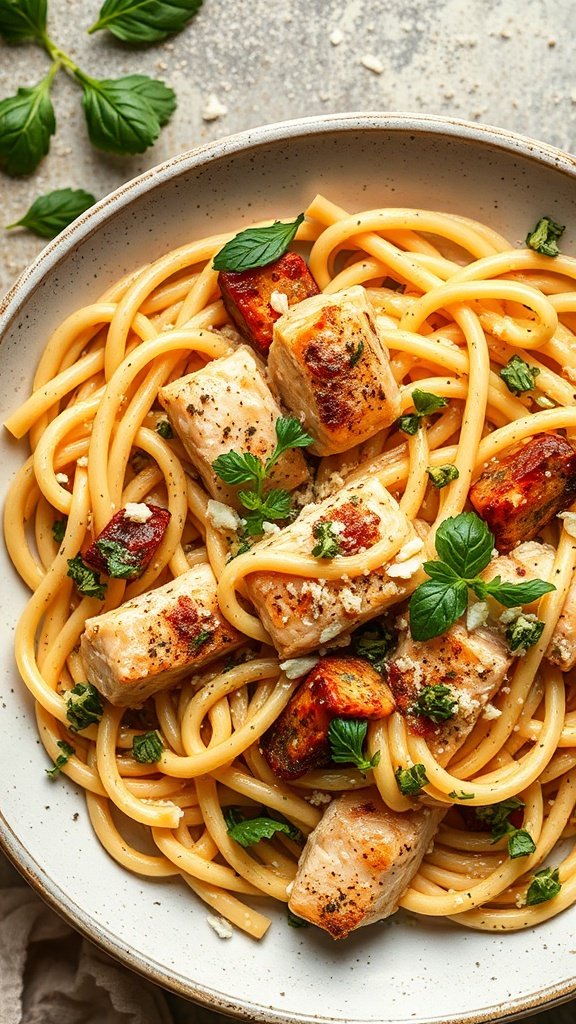An Anti-Inflammation Diet for Beginners: A Guide to Getting Started
Inflammation is a natural response of the body’s immune system to protect against harm and facilitate healing. However, chronic inflammation can have detrimental effects on our overall health and well-being. In recent years, there has been increasing interest in the role of diet in managing inflammation and promoting good health.
Understanding Inflammation and Its Effects on the Body
Many people are familiar with the redness and swelling that occur when you sprain your ankle or get a cut on your finger. This acute inflammation is the body’s way of mobilizing its defense mechanisms to promote healing. However, when inflammation becomes chronic, it can lead to a range of health issues, including cardiovascular diseases, diabetes, and even cancer.
What is Inflammation?
Inflammation is a complex biological process involving various immune cells and molecules. It can be either acute or chronic. Acute inflammation occurs in response to injury or infection and usually resolves within a few days or weeks. On the other hand, chronic inflammation is persistent and may last for several months or even years.
When the body detects an injury or infection, it releases chemicals that cause blood vessels to dilate, allowing more blood to flow to the affected area. This increased blood flow brings immune cells to the site of injury or infection, which help fight off any pathogens and promote healing. The release of these chemicals also leads to the characteristic redness, swelling, and warmth associated with acute inflammation.

Chronic inflammation, on the other hand, occurs when the immune system mistakenly triggers an inflammatory response even when there is no injury or infection present. This ongoing activation of the immune system can lead to tissue damage and the release of harmful substances that contribute to the development of chronic diseases.
Get this 2-Week Anti-Inflammatory Meal Plan (36 recipes included)

Causes and Symptoms of Chronic Inflammation
Chronic inflammation can be caused by various factors, such as poor diet, sedentary lifestyle, stress, and exposure to environmental toxins. It often manifests as persistent pain, swelling, fatigue, and an increased susceptibility to infections. If left unchecked, chronic inflammation can lead to the development of chronic diseases.
Poor diet, high in processed foods, sugar, and unhealthy fats, is a major contributor to chronic inflammation. These foods can trigger an immune response and promote the production of pro-inflammatory molecules in the body. Additionally, a sedentary lifestyle and high-stress levels can also contribute to chronic inflammation by disrupting the body’s natural inflammatory response and promoting the release of stress hormones.
Exposure to environmental toxins, such as air pollution and certain chemicals, can also trigger chronic inflammation. These toxins can enter the body through inhalation or ingestion and activate the immune system, leading to a chronic inflammatory state.
The Link Between Diet and Inflammation
Emerging evidence suggests that diet plays a crucial role in modulating inflammation. Certain foods can either promote or reduce inflammation in the body. By following an anti-inflammatory diet, you can help reduce chronic inflammation and improve your overall health.
An anti-inflammatory diet typically includes plenty of fruits and vegetables, whole grains, healthy fats (such as those found in olive oil and fatty fish), and lean proteins. These foods are rich in antioxidants and anti-inflammatory compounds that can help counteract the effects of chronic inflammation.
On the other hand, a diet high in processed foods, refined sugars, and unhealthy fats can promote inflammation in the body. These foods can increase the production of pro-inflammatory molecules and contribute to the development and progression of chronic diseases.
It’s important to note that while diet can play a significant role in reducing chronic inflammation, it is just one piece of the puzzle. Lifestyle factors such as regular exercise, stress management, and avoiding exposure to environmental toxins are also crucial in maintaining a healthy inflammatory balance.

The Basics of an Anti-Inflammation Diet
Adopting an anti-inflammatory diet involves making conscious choices about the foods you eat. While there is no one-size-fits-all approach, there are some key principles that can guide you in creating an anti-inflammatory eating plan.
Key Principles of an Anti-Inflammation Diet
An anti-inflammatory diet emphasizes whole, unprocessed foods that are rich in nutrients. It typically includes a variety of fruits, vegetables, whole grains, lean proteins, and healthy fats. Aim to incorporate a diverse range of colorful fruits and vegetables into your meals, as they are packed with antioxidants and anti-inflammatory compounds.
Foods to Include in an Anti-Inflammation Diet
Some foods have particularly potent anti-inflammatory properties. These include fatty fish like salmon, sardines, and mackerel, which are high in omega-3 fatty acids. Other anti-inflammatory foods include leafy greens, berries, nuts, seeds, and olive oil.

Foods to Avoid on an Anti-Inflammation Diet
While some foods can help reduce inflammation, others can contribute to inflammation in the body. It’s best to limit or avoid highly processed foods, sugary beverages, refined carbohydrates, and trans fats. Additionally, some people may find that certain foods such as gluten or dairy products exacerbate their inflammation. It’s important to listen to your body and adapt your diet accordingly.
Planning Your Anti-Inflammation Diet
Creating a balanced meal plan is key to successfully implementing an anti-inflammatory diet. By incorporating a variety of nutritious foods, you can ensure that your body receives all the essential nutrients it needs while reducing inflammation.
Creating a Balanced Meal Plan
Start by dividing your plate into sections and aim to fill half with colorful fruits and vegetables, one-quarter with lean proteins like fish, chicken, or plant-based alternatives, and the remaining quarter with whole grains or starchy vegetables. Don’t forget to include healthy fats, such as avocados, nuts, and seeds, in your meals.
Sample One-Week Anti-Inflammation Diet Plan
Here’s an example of a one-week meal plan to help you get started:
- Monday:
- Breakfast: Oatmeal topped with berries and a handful of walnuts
- Lunch: Grilled chicken salad with mixed greens, cucumber, and avocado
- Dinner: Baked salmon with roasted vegetables and quinoa
- Tuesday:
- Breakfast: Greek yogurt with sliced peaches and a sprinkle of chia seeds
- Lunch: Quinoa and black bean salad with cherry tomatoes and cilantro
- Dinner: Stir-fried tofu with broccoli and brown rice
- Wednesday:
- Breakfast: Spinach and mushroom omelet with whole grain toast
- Lunch: Lentil soup with a side of mixed green salad
- Dinner: Grilled shrimp skewers with zucchini noodles
- Thursday:
- Breakfast: Overnight chia pudding with almond milk and mixed berries
- Lunch: Chickpea and vegetable curry with brown rice
- Dinner: Baked chicken breast with steamed broccoli and sweet potato
- Friday:
- Breakfast: Whole grain toast with smashed avocado and poached eggs
- Lunch: Mediterranean quinoa salad with feta cheese and olives
- Dinner: Grilled steak with roasted Brussels sprouts and quinoa
- Saturday:
- Breakfast: Smoothie bowl with spinach, banana, almond milk, and granola
- Lunch: Grilled vegetable wrap with hummus
- Dinner: Baked cod with asparagus and wild rice
- Sunday:
- Breakfast: Quinoa pancakes with fresh berries and a drizzle of honey
- Lunch: Spinach and feta stuffed bell peppers with a side salad
- Dinner: Lentil and vegetable stir-fry with quinoa

Tips for Grocery Shopping and Meal Prep
To make meal planning and preparation easier, create a shopping list based on your meal plan and stick to it when you go grocery shopping. Try to choose fresh, organic, and locally sourced ingredients whenever possible. Additionally, spend some time on meal prep days to chop and store vegetables, cook grains, and prepare proteins in advance. This way, you’ll have healthy and convenient options readily available throughout the week.
Benefits of an Anti-Inflammation Diet
Adopting an anti-inflammatory diet can have numerous benefits for your overall health and well-being.
Potential Health Benefits
Research suggests that following an anti-inflammatory diet may help reduce the risk of chronic diseases such as heart disease, diabetes, and certain types of cancer. It can also support a healthy immune system and improve gut health.
Weight Loss and Anti-Inflammation Diet
An anti-inflammatory diet rich in whole, nutrient-dense foods can be beneficial for weight management. By reducing consumption of processed foods and added sugars, and focusing on whole foods, you can support healthy weight loss and maintain a stable weight in the long run.
Improved Energy Levels and Mood
Many people report increased energy levels and improved mood when they adopt an anti-inflammatory eating plan. The combination of nutrient-rich foods and reduced intake of processed foods can help stabilize blood sugar levels and prevent energy crashes.
By understanding and implementing the basics of an anti-inflammation diet, you can take a proactive approach to managing chronic inflammation and improving your overall health. Remember, it’s not just about what you eat, but also how you prepare and consume your meals. So, take the time to plan your meals, shop for quality ingredients, and savor each bite. Here’s to a healthier, inflammation-free you!





